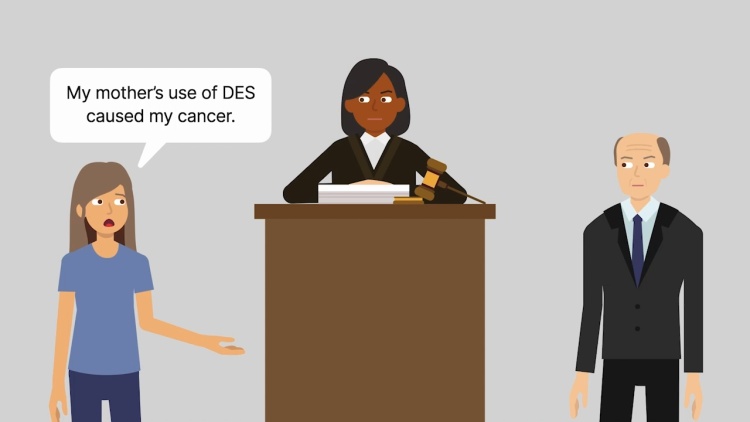Kaufman v. Eli Lilly & Co.
New York Court of Appeals
482 N.E.2d 63 (1985)

- Written by Sara Rhee, JD
Facts
Kaufman (plaintiff) was diagnosed with cervical cancer at age 18. Kaufman sued manufacturers of diethylstilbestrol (DES), a medication taken by pregnant women to prevent miscarriage, alleging that her cancer resulted from her mother taking DES while pregnant. Because Kaufman did not know which manufacturer made the DES her mother ingested, Kaufman sued some 147 pharmaceutical companies who manufactured and marketed DES, including Eli Lilly & Co. (Lilly) (defendant). Among various theories, Kaufman claimed a concerted action theory of liability, alleging that the defendants had conspired to obtain approval of DES without adequately testing it. Kaufman was one of 15 plaintiffs who brought similar actions in the First Department of the Supreme Court of New York. The first of the 15 cases to be tried was Bichler v. Lilly & Co., 55 N.Y.2d 571 (1982). The Bichler jury found in favor of the plaintiff and answered seven special interrogatories in the plaintiff’s favor. One of the jury’s findings was that Lilly was liable under a theory of concerted action. The appellate division affirmed. After the Bichler decision, Kaufman moved for partial summary judgment granting collateral estoppel effect to six of the findings made by the Bichler jury, including the finding that Lilly was liable under a theory of concerted action. The appellate division affirmed but granted Lilly leave to appeal.
Rule of Law
Issue
Holding and Reasoning (Simons, J.)
What to do next…
Here's why 899,000 law students have relied on our case briefs:
- Written by law professors and practitioners, not other law students. 47,000 briefs, keyed to 994 casebooks. Top-notch customer support.
- The right amount of information, includes the facts, issues, rule of law, holding and reasoning, and any concurrences and dissents.
- Access in your classes, works on your mobile and tablet. Massive library of related video lessons and high quality multiple-choice questions.
- Easy to use, uniform format for every case brief. Written in plain English, not in legalese. Our briefs summarize and simplify; they don’t just repeat the court’s language.






